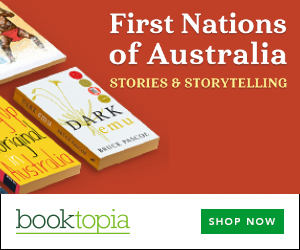Books
Men's Business, Women's Business
Summary
Hannah's book presents the experience of living in a society in which every action is governed by the gender laws of nature and myth, rather than those of commerce and politics. Men's Business, Women's Business offers us ideas for the conduct of our lives by exploring the relationship between men and women beyond male and female roles. It shows how everything in creation is made of two, and that the two are necessarily different, each with its place in creation and in balance with the other.
For thousands of years the Ngarinyin Aboriginal culture of Australia has existed with almost a total division of responsibility between genders. Rather than making one gender feel superior to the other, this division enables both to respect the power, wisdom, and essentiality of the other. Only when the two genders work in harmony does their culture function as it should.
In the Ngarinyin tradition, each chapter is presented as a story, following Aboriginal boys and girls from childhood through adolescence, adulthood, old age, and death, contrasting their experiences with those of non-Indigenous people at the same life stages.
Men's Business, Women's Business is a masterful blending of the Aboriginal way of learning through storytelling and exploring the mythic, and the Western rational perspective of analysis.
Why has Hannah written this book?
Hannah explained to me why she wrote a book about such a sensitive topic.
"The lawpeople asked me to write the first book, Men's Business, Women's Business because, after years of giving their knowledge to academics, they didn't see any accessible, trade books on their cosmology. What they did see were monographs, ethnographic studies, academic works that didn't make sense to them, and were useless for their children and families. They wanted the meaning of their way of life properly conveyed. Of necessity this required a 'voice' or writing style that reflected their way of seeing, of 'being' in country.
"Certainly they were afraid that their knowledge may go to the earth with their passing. But they were also under threat from mining interests, and wanted their story told in a non-legalistic, non-academic way in which the feeling content of their beliefs and values was revealed: the underlying spirituality in which all relationships are rooted if you like."
Has Hannah the authority to write about Aboriginal people's business?
Writing about Aboriginal men's or women's business as non-Indigenous person can get you into all sorts of trouble. Here is Hannah's response when I asked her about this.
"In the mid-1990's the Ngarinyin lawmen and lawwomen asked me to write a book about their way of seeing, their law. I wrote Men's Business, Women's Business. The process of writing, checking and rechecking for this book was exhaustive, with the law people spending many weeks at my farmhouse going through the manuscript. This book has the most detail about men's business and women's business. There has only been very positive feedback, and it has been on school curricula for 5 years.
"I was (and am) able to write about men's business because it's what the Ngarinyin authorised and encouraged, and, of course, have witnessed several times in the woman's role. In addition, the lawmen both informed and checked my writing."
Men's Business, Women's Business list of chapters
- The formation of identity
- Introduction to the Ngarinyin
- The seed: conception and birth
- Wuudu time: early childhood
- Metamorphosis: adolescence
- Coming of age: early adulthood
- Acquire wisdom: maturity
- Journey to dulugun: death
- Two-way thinking
- Law in the mythic
- Converging paradigms
Get a copy now from your favourite trusted store
Disclosure: I get commissions for purchases made through the below links.

